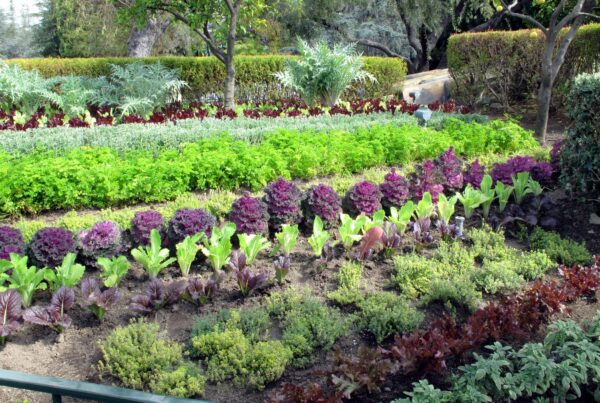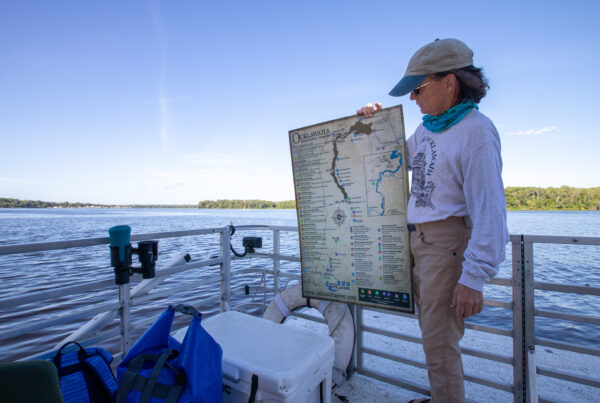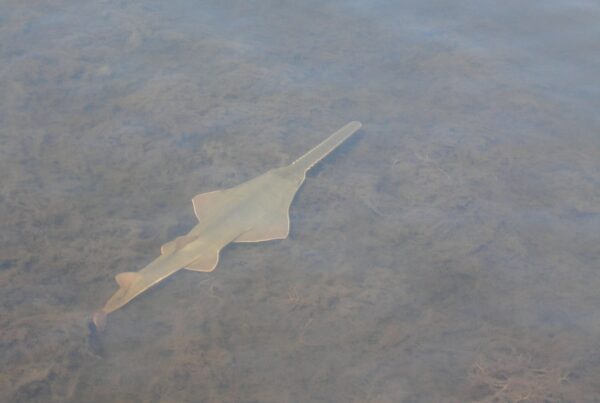As we transition to spring in Florida, changes can be subtle in some regions. But there is plenty happening outside. As the days get longer and the weather warms up, you might notice a shift in the activity of plants and wildlife. If you stroll in Florida’s parks, preserves, and forests, there’s a good chance you’ll see wildflowers in bloom.
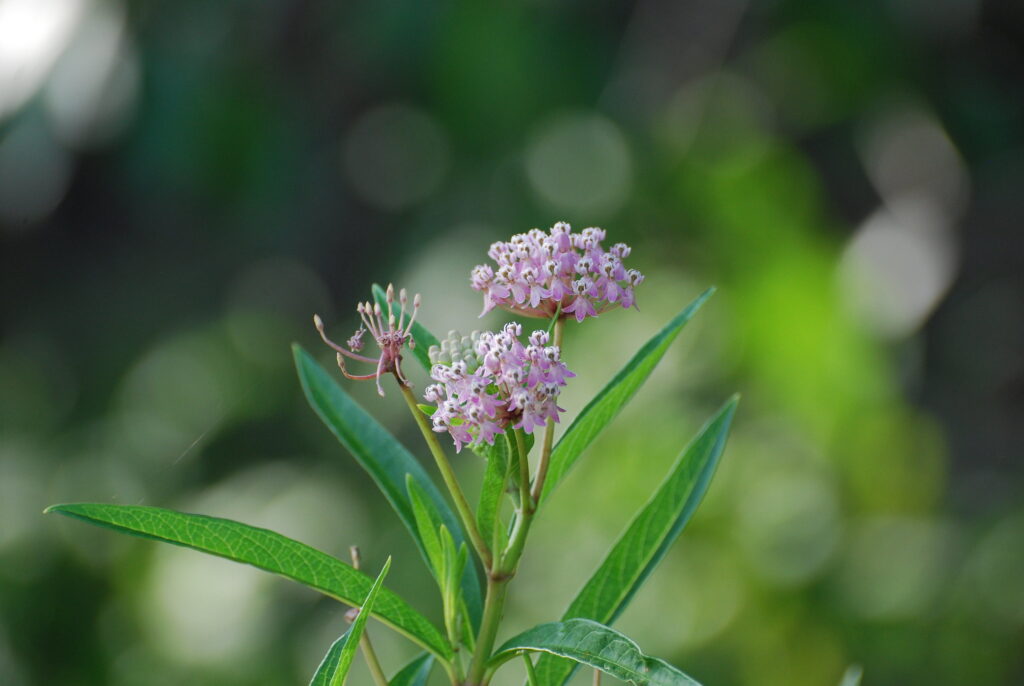
Swamp Milkweed. Photo by Noah Hart
In a natural area you visit regularly, you might recognize familiar wildflowers. Visit at a different time in the season or head to a new place, and you could discover something completely unexpected.
When we see wildflowers in their native habitat, it can spark an interest in adding them to our gardens. Some can be good choices, while others can present challenges.
On her recent hikes, Marney Richards, FWF’s Education and Outreach Coordinator, came across a variety of native wildflowers—each offering a different glimpse into the season. Some were familiar sights, while others were new discoveries, highlighting the incredible diversity that Florida’s landscapes reveal. When hiking in spring or early summer, you might find a few of these native wildflowers in bloom.
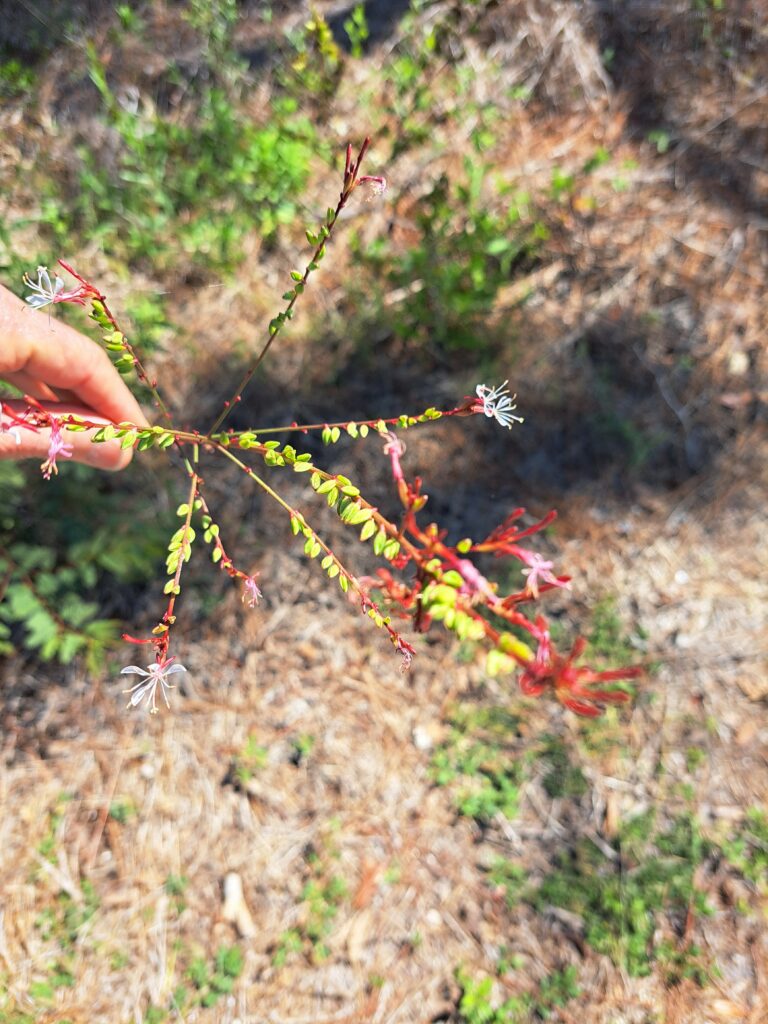
Southern beeblossom. Photo by Marney Richards
Southern beeblossom (Oenothera simulans) flowers in spring through summer and can be found along roadsides, in pinelands, open woods, or fields throughout the state. This native flower opens at night and attracts a wide range of small pollinators, including moths and bees. The species native to Florida is also known as Gaura angustifolia.
This perennial can be grown in the garden, though the native species is not generally found at nurseries. A cultivar considered to be Florida friendly is available in some areas. The plant grows 3-6 feet in height, in dry well-drained soil. It self-seeds readily and deadheading (removing faded or dead flowers) is recommended to prevent it from spreading.
Sweetscent (Pluchea odorata), or salt marsh fleabane, is a short-lived native perennial occurring naturally on marsh and swamp edges throughout Florida. It typically blooms in summer through fall with sweet-smelling leaves and flowers that attract butterflies and bees.
Reaching between 1.5 and 4 feet in height in full sun, sweetscent can be used in moist wildflower gardens. This plant isn’t often cultivated, so it’s rarely found in nurseries. While it can be grown easily from seed, it’s essential to remember that a permit is required to collect any seeds from city, county, state or federal land, and permission is needed to gather seeds on private lands. Checking with a Florida Native Plant Society chapter in your area can help you learn if there are any gardeners with seeds to share.
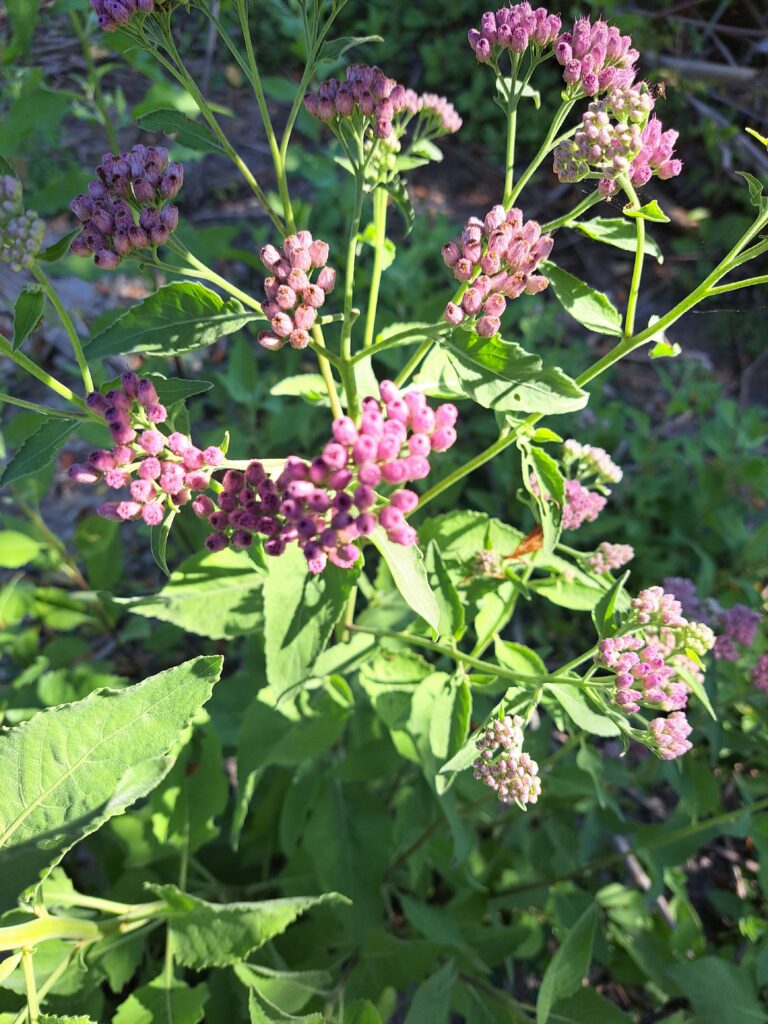
Sweetscent. Photo by Marney Richards
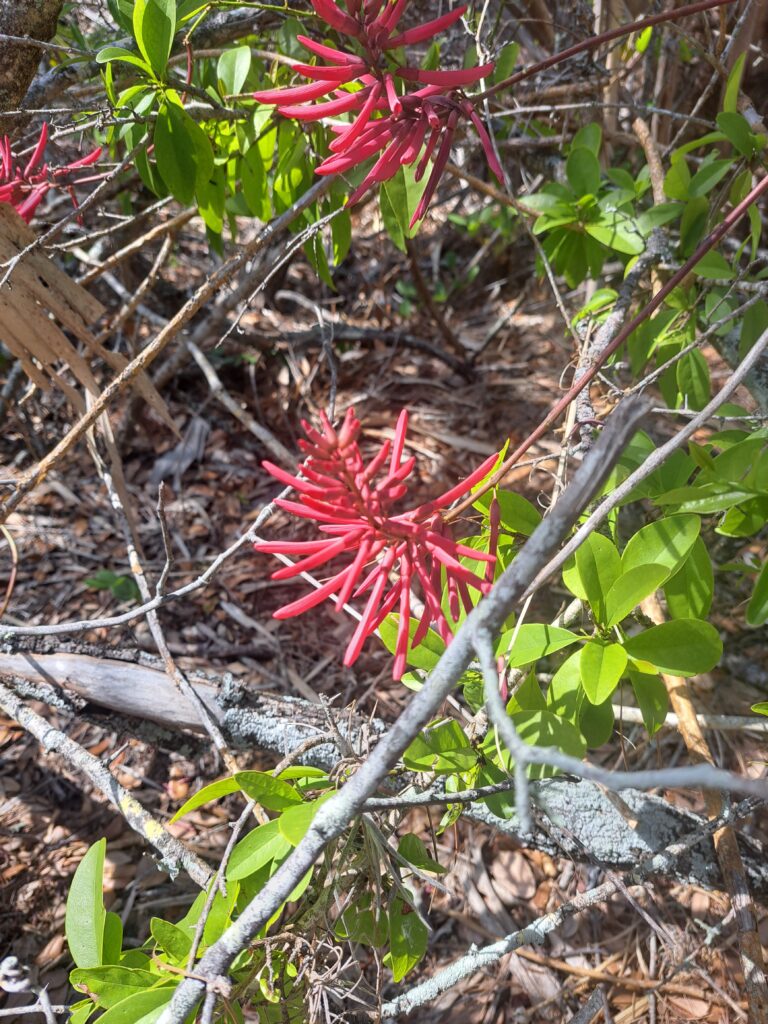
Coralbean. Photo by Marney Richards
Coralbean (Erythrina herbacea) is a versatile native plant that grows in upland forests, tropical hammocks, coastal dunes, sandhill flatwoods, and pine rocklands throughout the state. Hummingbirds and long-tongued pollinators find nectar in the long, red flowers, and the plant provides shelter for birds and small mammals.
Adaptable to full sun or shade, coralbean grows 3-20 feet in height and plants are sold at many native nurseries. Gloves are recommended if working with its toxic seeds though. Many popular landscape plants produce harmful compounds like coralbean, but these plants can be still used in the garden with special consideration to areas used by small children and pets.
Moonflower (Ipomoea alba) is a vigorous native vine that can grow up to 40 feet in length. It’s found in disturbed wetland and lake edges and mangrove fringes through much of Central and South Florida.
Part of the morning glory family, it has beautiful, fragrant white flowers. While native to Florida, it is considered invasive in subtropical and tropical areas outside of its natural range. Moonflower is extremely vigorous and can be challenging in a garden setting. It’s recommended to plant only where it can be controlled, such as on a trellis.
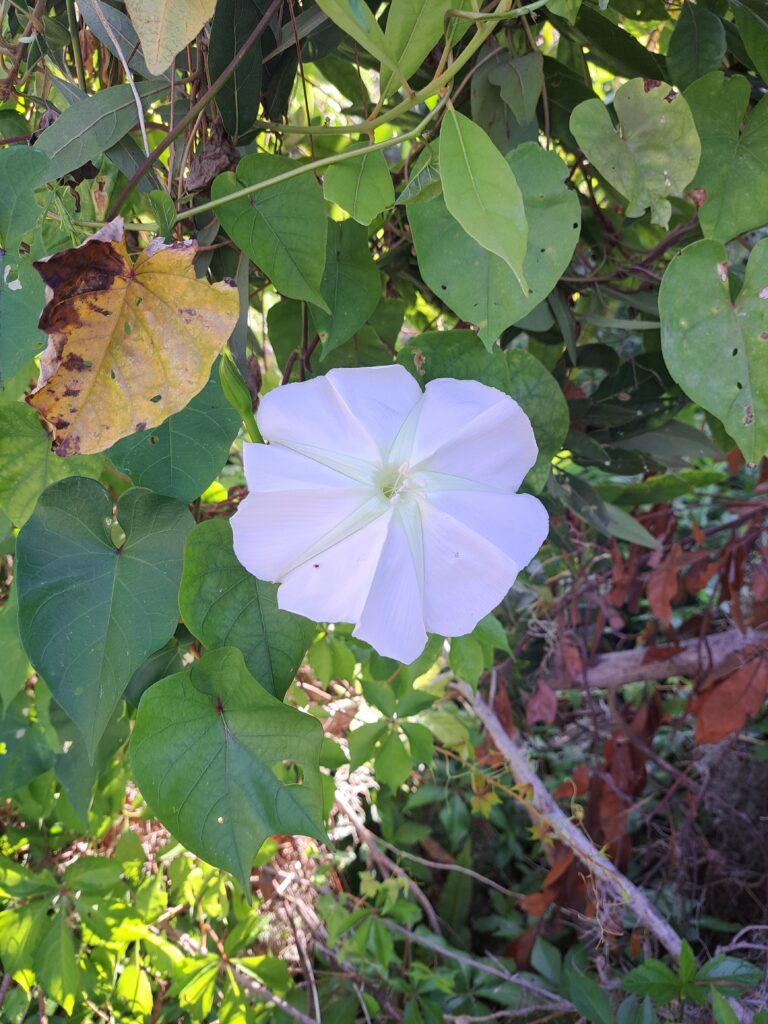
Moonflower. Photo by Marney Richards
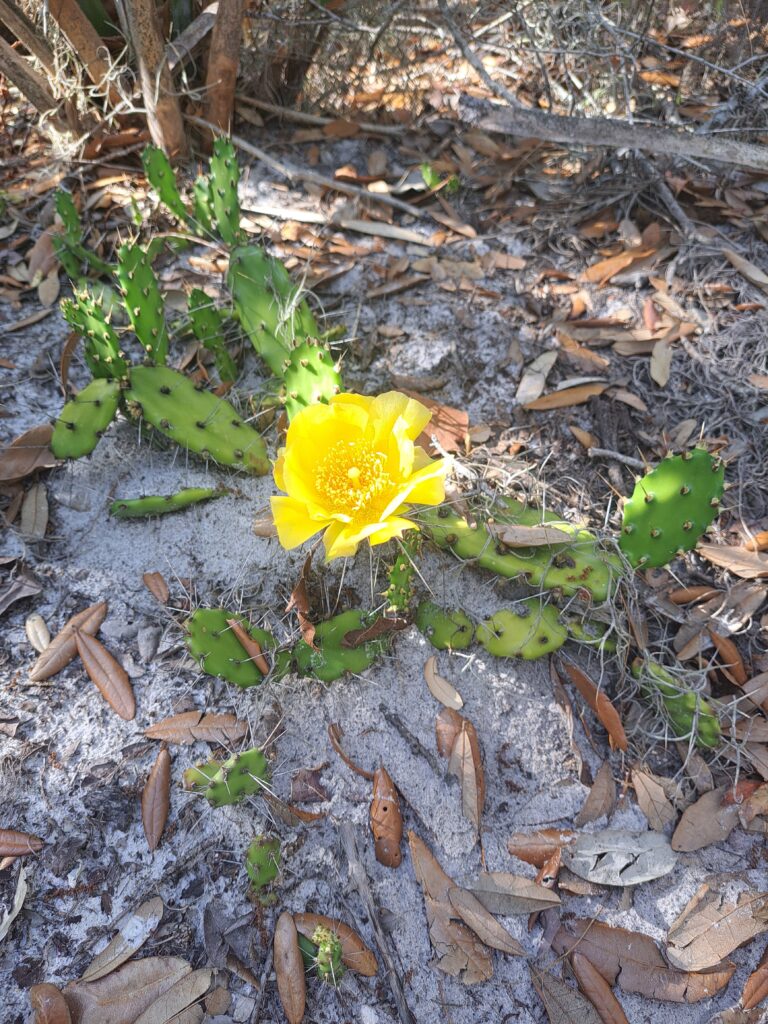
Prickly pear cactus. Photo by Marney Richards
Prickly pear cactus (Opuntia spp.) occurs naturally in scrub, scrubby flatwoods, sandhills, coastal strands, dry, open areas and disturbed sites throughout Florida. It flowers in late spring and attracts a wide range of pollinators, especially native bees. The fleshy fruits and seeds are eaten by birds and small mammals. Gopher tortoises will browse the fruits, seeds, and even the thorny pads!
This wildflower has a beautiful bloom and is worth considering in a cactus garden or hot, dry site where thorns won’t be a problem.
Sparkleberry (Vaccinium arboreum) is a beautiful spring bloomer found in native habitat in dry hammocks, coastal dunes, and sandhills in the Panhandle south to Lee and Martin counties. Its small, fragrant flowers support many pollinators, especially native bees.
Shrubs and small trees are excellent additions to wildlife habitat gardens. Sparkleberry is a tall species of blueberry, growing 15-25 feet tall and does well under high pine canopy. It blooms profusely in spring and displays beautiful fall color. Easy to maintain and drought tolerant, it is an excellent choice for a native shrub or tree for a small space.
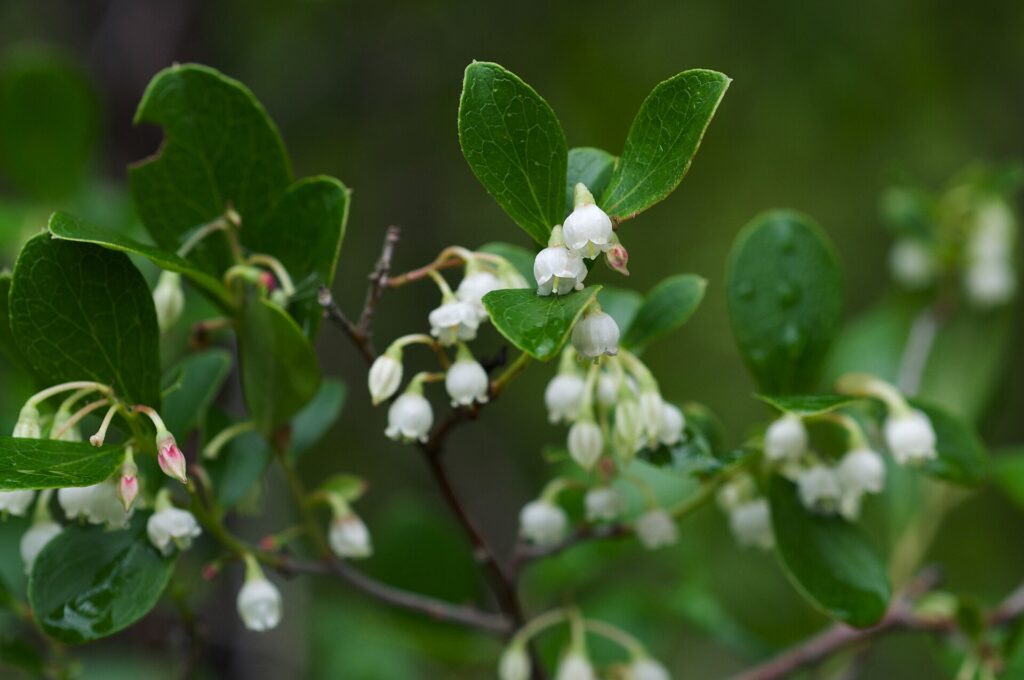
Sparkleberry. Photo by Eric Hunt
Spring and early summer are wonderful times to get outside and experience Florida’s wildflowers in their natural settings. Whether you’re visiting a nearby park, hiking a favorite trail, or exploring a new preserve, each walk offers the chance to discover something new in bloom. If you feel inspired to bring a bit of Florida’s native beauty into your own backyard, explore our Gardening in Florida page for resources, tips, and ideas to help you get started with native plants.



